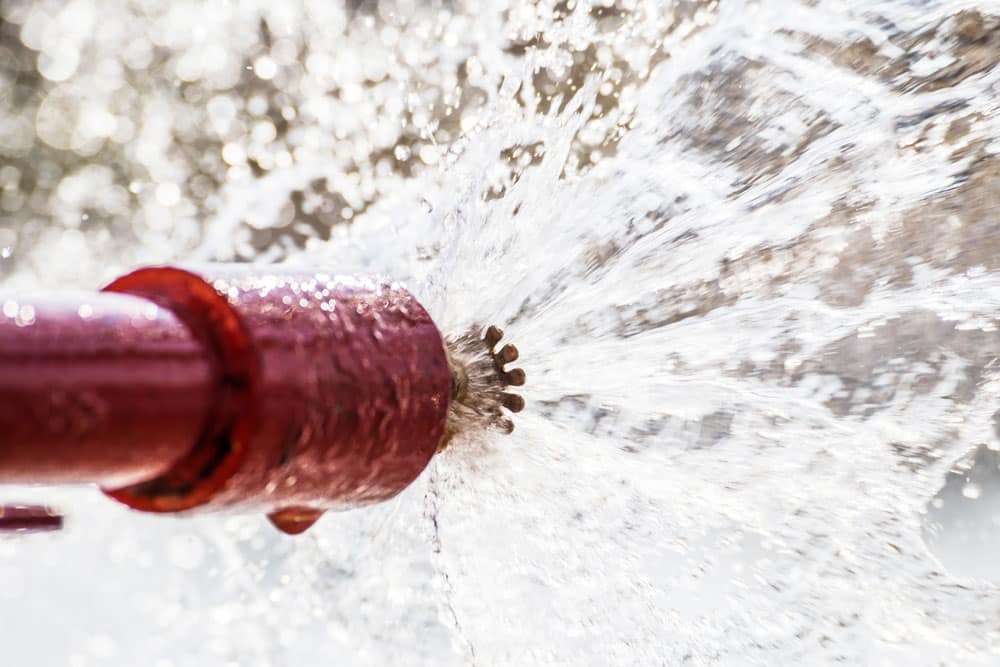The first step to an effective fire protection strategy is to install a fire sprinkler system. The second step is to ensure it’s always in good operating condition.
One factor that could deter that? Obstructions.
Since fire sprinkler system pipe diameters can be as small as 1”, it doesn’t take a whole lot to cause an obstruction that inhibits water flow. And without sufficient water flow, your sprinkler system won’t be able to put out fires as effectively, leading to costly damage.
So, let’s discuss some common fire sprinkler system obstructions, as well as what steps you can take to prevent them.
5 Most Common Fire Sprinkler System Obstructions
There are many objects and materials that can cause fire sprinkler system obstructions — just ask our technicians about all the random things they’ve removed from pipes! However, there are a few more common culprits to be aware of. Below, we’ll give details on five of them.
1. Corrosion
Corrosion is the deterioration of a material due to a chemical reaction. And, unfortunately, the presence of metal, water, and oxygen in fire sprinkler systems make corrosion inevitable. In fact, most piping systems contain some traces of it — it’s just usually not enough to pose a risk for obstruction. But when the level of corrosion does get too high, obstruction is likely.
The most common types of corrosion that cause fire sprinkler systems obstructions are:
- Iron oxide corrosion, which is commonly referred to as rust.
- Microbiologically influenced corrosion (MIC), which is the presence and/or activity of microorganisms (e.g. bacteria, fungi) in biofilms on the corroding material.
- Galvanic corrosion, which is when two or more dissimilar metals are in electrical contact under water.
2. Foreign Materials from Raw Water Sources
If your fire sprinkler system uses water from unfiltered or poorly filtered sources, it may be at risk for a foreign material obstruction. Rivers, ponds, and open reservoirs all have sands, gravels, sticks, and stones within them — and no matter how fine or coarse the materials are, they can all eventually lead to an obstruction.
That said, it’s important to understand your fire sprinkler system’s water source, and it’s important that you take preventative screening measures to ensure it’s as free from foreign materials as possible.
3. Biological Growth
Similarly, raw and unfiltered water sources can also result in biological growth obstructions within your fire sprinkler system. Species like Asiatic clams and zebra mussels can find their way into your system as small larvae, then grow larger by feeding on bacteria and algae that pass by.
Ideally, you’d supply your fire sprinkler system with filtered and chlorinated water — but in some cases, that’s not possible. That’s when it’s important to conduct some treatments of your own, such as molluscicides or chlorination.
4. Calcium Carbonate Deposits
When the concentration of calcium and magnesium salt is high, the water in your fire sprinkler system can get hard. Hard water creates a thin film of calcium carbonate, which can obstruct sprinkler openings. These obstructions are most common with fire sprinkler systems that source water from non-potable wells or areas that are known to have hard water.
5. Ice Plugs
Of course, when temperatures drop below 32°F, there is risk for freezing, which also means there is risk for ice plug obstructions within your fire sprinkler system. Any water or condensation within your system’s pipes is at risk of freezing and causing a problem, so it’s important to be aware of what temperatures your fire sprinkler system is operating under.
How to Prevent Fire Sprinkler System Obstructions
Obstructions can lead to costly, devastating consequences. They can damage your pipes and cause your fire sprinkler system to function improperly in the event of a fire, inflicting harm on your property, products, and people.
So, what can be done to prevent them? The key is to be proactive. By following the National Fire Protection Association’s (NFPA’s) testing and inspection requirements, and knowing what issues to look out for, you can identify obstructions in their early stages and resolve any problems before they cause too much damage.
Complete Routine Fire Sprinkler System Obstruction Inspections Required by NFPA 25
For water-based fire sprinkler systems, NFPA 25 requires an inspection of the internal condition of piping every five years. If there is minimal obstruction-causing material found, that’s where the inspection ends. However, if a sufficient volume or type of a certain material is found, a more in-depth investigation is required to understand the cause of the obstruction and to fix it.
For dry and pre-action systems, an inspection of the internal condition of piping is required every three years during the regular full-flow trip test. The higher inspection frequency is due to the higher tendency for corrosion in dry and pre-action systems.
Be Vigilant of Other Possible Fire Sprinkler System Obstruction Indicators
Aside from the routine inspections mentioned above, there are some other factors you can look out for during other everyday uses, tests, and maintenance. If you notice any of the following, it may be a red flag, warning you of a possible fire sprinkler system obstruction:
- Defective intake for fire pumps
- Foreign material discharge in water or drain tests
- Foreign materials in fire pumps, dry pipe valves, or check valves
- Plugged sprinklers
- Various pinhole leaks
- 50% increase in the time it takes water to move to the test connection during a full-flow trip test, compared to an original system acceptance test (for dry systems only)
Worried that your fire sprinkler system might have an obstruction? Get the expert inspection, investigation, and maintenance you need at Vanguard Fire & Security Systems. Our skilled professionals are here to ensure your system is keeping your property, products, and people safe. For more information or to schedule an inspection, contact our team today.


